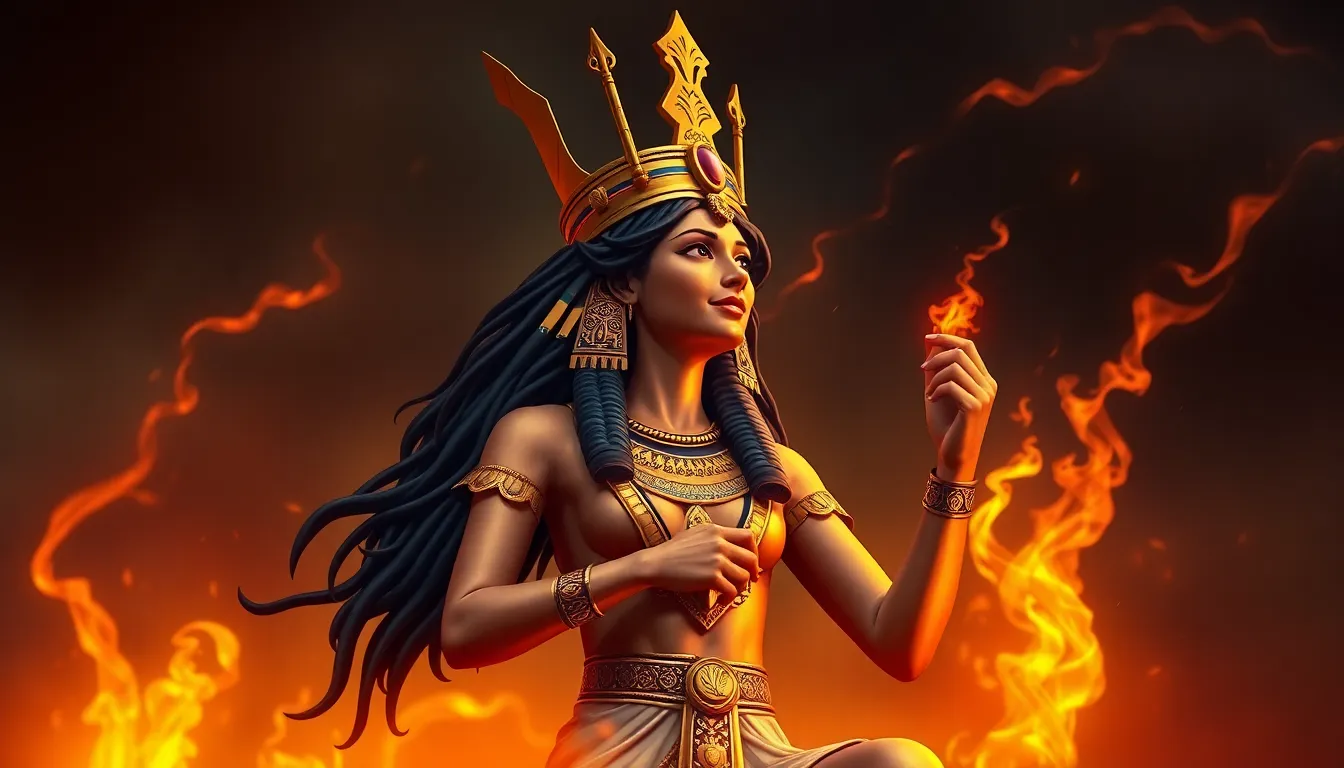Hathor: The Joyful Goddess of Love and Music
I. Introduction
In the vast and intricate tapestry of ancient Egyptian mythology, Hathor stands out as one of the most beloved and multifaceted deities. Revered as the goddess of love, music, and joy, she holds a significant place in the hearts of the ancient Egyptians. Her influence extended beyond mere worship; she was integral to the cultural and social fabric of Egyptian life.
This article aims to explore the attributes, symbolism, and cultural impact of Hathor, shedding light on why she remains a figure of fascination and respect in both ancient and modern contexts.
II. Historical Context of Hathor
Hathor’s origins can be traced back to the early dynastic periods of Egypt, evolving over centuries into a complex deity with various aspects and representations. Initially depicted as a cow goddess, her nurturing qualities were emphasized, symbolizing fertility and motherhood.
Key historical texts, such as the Pyramid Texts and the Coffin Texts, provide insight into her worship and significance. Numerous artifacts, including statues and amulets, depict her in various forms, illustrating her importance across different eras.
As part of the Egyptian pantheon, Hathor was often associated with other gods, including Ra, the sun god, and Osiris, the god of the afterlife. Her role as a mediating goddess was crucial, as she was believed to facilitate connections between the divine and mortal realms.
III. Symbolism and Attributes of Hathor
Hathor is associated with several powerful symbols that reflect her diverse nature:
- The Cow: Representing motherhood, fertility, and nourishment.
- The Sistrum: A musical instrument that symbolizes joy and celebration.
- Golden Jewelry: Indicating her status as a goddess of beauty and love.
In art and sculpture, Hathor is often depicted as a woman with cow horns, cradling the sun disk between them. This imagery conveys her nurturing yet powerful nature.
Hathor embodies a duality that is central to her character: she is both a nurturing goddess and a fierce protector. This complexity made her an essential figure in various aspects of life, from childbirth to warfare.
IV. Hathor as the Goddess of Love
As the goddess of love, Hathor played a pivotal role in relationships and romantic unions. Her influence permeated various aspects of love and family life in ancient Egypt:
- Rituals and Practices: Couples would often engage in rituals dedicated to Hathor to seek her blessings for love and fertility.
- Marriage Ceremonies: Hathor was invoked in marriage ceremonies, ensuring harmony and joy in the union.
- Family Life: Her nurturing qualities were believed to foster strong familial bonds and promote happiness within the household.
V. Hathor and Music
Music held a sacred place in ancient Egyptian culture, and Hathor was at the center of this artistic expression. Her connection to music and dance is profound:
- Instruments: The sistrum, a sacred rattling instrument, was closely associated with her, often used in religious ceremonies.
- Cultural Significance: Music was considered a vital element in rituals, celebrations, and daily life, often used to honor the gods.
- Festivals: Hathor’s festivals featured music and dance, celebrating her essence as the goddess of joy and music.
VI. Hathor’s Influence on Other Cultures
Hathor’s worship extended beyond the borders of Egypt, influencing neighboring cultures and societies. Her attributes and characteristics can be compared to similar deities in other mythologies:
- Aphrodite: The Greek goddess of love, beauty, and pleasure, sharing themes of romance and femininity.
- Venus: The Roman counterpart to Aphrodite, embodying similar qualities of love and beauty.
Hathor’s legacy continues today, inspiring modern spirituality and artistic expressions, where her image is often invoked in discussions about femininity and empowerment.
VII. Hathor in Modern Interpretations
Contemporary representations of Hathor can be seen in various forms of art and literature. Her image has evolved, but her essence remains influential:
- Art and Literature: Modern artists and writers often draw on her themes of love and music, reinterpreting her stories for new audiences.
- Feminist Spirituality: Hathor has emerged as a symbol in the resurgence of goddess worship, representing feminine power and nurturing.
- Music and Artistic Expressions: Many contemporary musicians and performers pay homage to Hathor, celebrating her connection to music and joy.
VIII. Conclusion
Hathor’s enduring legacy as a goddess of love and music highlights her significance in both ancient Egyptian culture and modern spirituality. Her multifaceted nature, encompassing joy, nurturing, and protection, continues to resonate with people today.
Preserving ancient myths such as those surrounding Hathor is essential, as they offer insights into human relationships, creativity, and the divine. As we explore the rich history of Hathor, we uncover valuable teachings that remain relevant in our contemporary lives.




